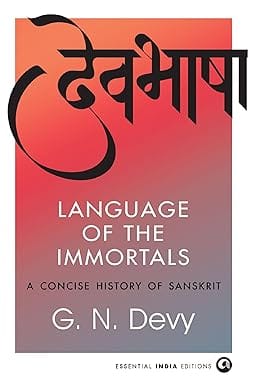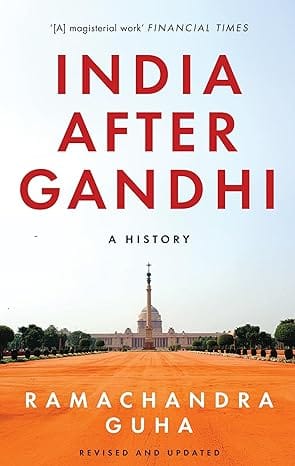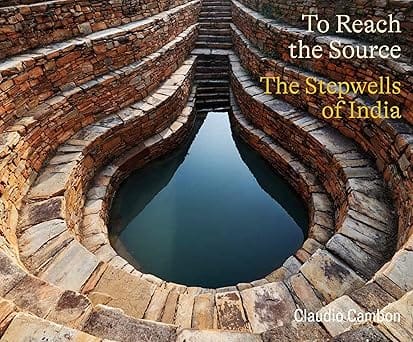WELCOME TO MIDLAND BOOK SHOP!
SHOP FOR
- Non-ficton
- Non-ficton
- Contemporary Fiction
- Contemporary Fiction
- Children
- Children
- Comics & Graphic Novels
- Comics & Graphic Novels
- Non-Fiction
- Non-Fiction
- Fiction
- Fiction
Shop No.20, Aurobindo Palace Market, Hauz Khas, Near Church +91 9818282497 | 011 26867121 110016 New Delhi IN
Midland The Book Shop ™
Shop No.20, Aurobindo Palace Market, Hauz Khas, Near Church +91 9818282497 | 011 26867121 New Delhi, IN
+919871604786 https://www.midlandbookshop.com/s/607fe93d7eafcac1f2c73ea4/677cda367903fd013d69b606/without-tag-line-480x480.png" [email protected]9789365235432 688f2b6c6a1943c882a4e8a2 Language Of The Immortals A Concise History Of Sanskrit https://www.midlandbookshop.com/s/607fe93d7eafcac1f2c73ea4/688f2b6d6a1943c882a4e8aa/61gcq3ziefl-_sy385_.jpg 9789365235432
Sanskrit has long been celebrated as one of the building blocks of Indian civilization, and is venerated in temples, scriptures, and classical literature. In Language of the Immortals, renowned scholar and critic G. N. Devy uncovers the astounding paradox of Sanskrit—an ancient language that shaped Indian thought, philosophy, and identity for millennia, yet was never truly a language of the people.
With rigorous scholarship, Devy dismantles enduring myths and offers a revealing commentary on Sanskrit’s historical and cultural trajectory. He shows how it achieved unsurpassed prestige not through conquest or commerce, but sheer intellectual brilliance. He explores the way in which Sanskrit shaped intellectual life across centuries, influenced cultures beyond India, and maintained its prestige through the oral tradition and spiritual symbolism rather than the patronage of the state.
This concise yet profound work reimagines what it means for a language to live on—long after it has ceased to be spoken.
With rigorous scholarship, Devy dismantles enduring myths and offers a revealing commentary on Sanskrit’s historical and cultural trajectory. He shows how it achieved unsurpassed prestige not through conquest or commerce, but sheer intellectual brilliance. He explores the way in which Sanskrit shaped intellectual life across centuries, influenced cultures beyond India, and maintained its prestige through the oral tradition and spiritual symbolism rather than the patronage of the state.
This concise yet profound work reimagines what it means for a language to live on—long after it has ceased to be spoken.
About the Author
G. N. Devy is currently the Senior Professor of Eminence and Director, School of Civilization, Somaiya Vidyavihar University and was previously the Obaid Siddiqi Chair Professor at the National Centre for Biological Sciences, and Director, Adivasi Academy, Tejgadh, and Professor of English at the Maharaja Sayajirao University of Baroda. He led the People’s Linguistic Survey of India (PLSI), a comprehensive documentation of all living Indian languages, forming a fifty-volume PLSI Series. He has received several awards for his writing as well as for his community work, including the Padma Shri, Prince Claus Award, and Linguapax Award. His English publications include After Amnesia, Of Many Heroes, Painted Words, Nomad Called Thief, The Question of Silence, Countering Violence, The Crisis Within: On Knowledge and Education in India, Mahabharata: The Epic and the Nation, and India: A Linguistic Civilization. He is the co-editor (with Ravi Korisettar and Tony Joseph) of The Indians: Histories of a Civilization.
in stockINR 319
1 1
Email ID already exists!
Your Current password is incorrect
Password Updated Successfully
Thanks for your Feedback
- Home
- Non-Fiction
- Language Of The Immortals A Concise History Of Sanskrit
Language Of The Immortals A Concise History Of Sanskrit
ISBN: 9789365235432
₹319
₹399 (20% OFF)SIZE GUIDE
Sold By: Hauz Khas - Aurobindo Market
Details
- ISBN: 9789365235432
- Author: G N Devy
- Publisher: Aleph Book Company
- Pages: 96
- Format: Hardback
Book Description
Sanskrit has long been celebrated as one of the building blocks of Indian civilization, and is venerated in temples, scriptures, and classical literature. In Language of the Immortals, renowned scholar and critic G. N. Devy uncovers the astounding paradox of Sanskrit—an ancient language that shaped Indian thought, philosophy, and identity for millennia, yet was never truly a language of the people.
With rigorous scholarship, Devy dismantles enduring myths and offers a revealing commentary on Sanskrit’s historical and cultural trajectory. He shows how it achieved unsurpassed prestige not through conquest or commerce, but sheer intellectual brilliance. He explores the way in which Sanskrit shaped intellectual life across centuries, influenced cultures beyond India, and maintained its prestige through the oral tradition and spiritual symbolism rather than the patronage of the state.
This concise yet profound work reimagines what it means for a language to live on—long after it has ceased to be spoken.
With rigorous scholarship, Devy dismantles enduring myths and offers a revealing commentary on Sanskrit’s historical and cultural trajectory. He shows how it achieved unsurpassed prestige not through conquest or commerce, but sheer intellectual brilliance. He explores the way in which Sanskrit shaped intellectual life across centuries, influenced cultures beyond India, and maintained its prestige through the oral tradition and spiritual symbolism rather than the patronage of the state.
This concise yet profound work reimagines what it means for a language to live on—long after it has ceased to be spoken.
About the Author
G. N. Devy is currently the Senior Professor of Eminence and Director, School of Civilization, Somaiya Vidyavihar University and was previously the Obaid Siddiqi Chair Professor at the National Centre for Biological Sciences, and Director, Adivasi Academy, Tejgadh, and Professor of English at the Maharaja Sayajirao University of Baroda. He led the People’s Linguistic Survey of India (PLSI), a comprehensive documentation of all living Indian languages, forming a fifty-volume PLSI Series. He has received several awards for his writing as well as for his community work, including the Padma Shri, Prince Claus Award, and Linguapax Award. His English publications include After Amnesia, Of Many Heroes, Painted Words, Nomad Called Thief, The Question of Silence, Countering Violence, The Crisis Within: On Knowledge and Education in India, Mahabharata: The Epic and the Nation, and India: A Linguistic Civilization. He is the co-editor (with Ravi Korisettar and Tony Joseph) of The Indians: Histories of a Civilization.
User reviews
NEWSLETTER
Subscribe to get Email Updates!
Thanks for subscribing.
Your response has been recorded.

India's Iconic & Independent Book Store offering a vast selection of books across a variety of genres Since 1978.
"We Believe In The Power of Books" Our mission is to make books accessible to everyone, and to cultivate a culture of reading and learning. We strive to provide a wide range of books, from classic literature, sci-fi and fantasy, to graphic novels, biographies and self-help books, so that everyone can find something to read.
Whether you’re looking for your next great read, a gift for someone special, or just browsing, Midland is here to make your book-buying experience easy and enjoyable.
We are shipping pan India and across the world.
For Bulk Order / Corporate Gifting
 +91 9818282497 |
+91 9818282497 |  [email protected]
[email protected]
Click To Know More
INFORMATION
QUICK LINKS
ADDRESS
Midland Book Shop - Hauz Khas
Shop No.20, Aurobindo Palace Market, Near Church, New Delhi
Shop No.20, Aurobindo Palace Market, Near Church, New Delhi














